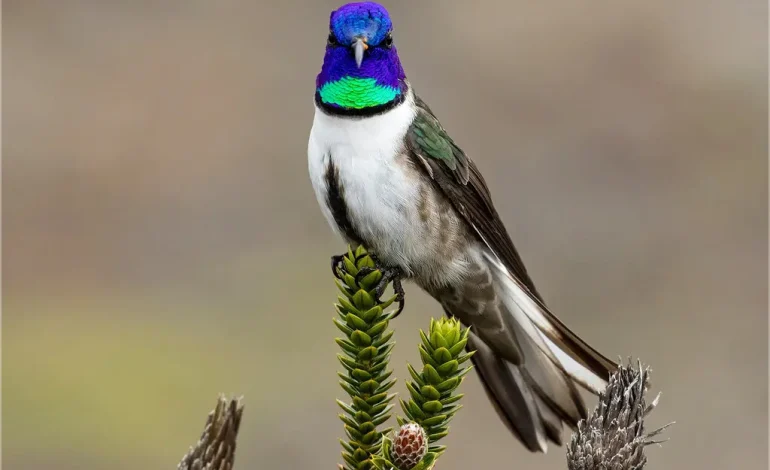Unusual Discovery: Hummingbirds Found Nesting and Roosting Together in Ecuador

In a surprising discovery, researchers have documented a group of hummingbirds living together in a cave in Ecuador’s High Andes—a behavior never before observed in these typically solitary and territorial birds, the New York Times reports.
Ornithologist and birding guide Gustavo Cañas-Valle stumbled upon the cave, where he found 23 adult hummingbirds and four chicks of the subspecies Oreotrochilus chimborazo chimborazo, also known as the Chimborazo hillstar, nesting and sleeping in close proximity.
This unexpected finding, described in the journal Ornithology in November, challenges long-held beliefs about hummingbird behavior. Hummingbirds are generally known for their aggressive territoriality, often engaging in high-speed aerial chases and beak jousting over food and mates. Yet, in this case, they were found roosting and nesting communally—a phenomenon rarely seen even in more social bird species.
At first, researchers hypothesized that the extreme environmental conditions of the Chimborazo volcano, where these birds reside at over 12,000 feet above sea level, may have driven them to cluster together. The region offers limited nectar-rich flowers, scarce water sources, and harsh weather conditions with freezing temperatures and strong winds.
“Either you aggregate or perish,” said Juan Luis Bouzat, an evolutionary geneticist at Bowling Green State University and a co-author of the study.
However, further investigation suggested that the hummingbirds were not simply forced into group living by environmental pressures but were actively choosing to do so. Mr. Cañas-Valle found six additional sites where hummingbirds were nesting together. The researchers also examined concrete drainage pipes in the region that provided similar environmental conditions but could only fit one or two nests. They discovered that only 45% of these pipes contained nests, whereas 82% of all nests documented were in group settings—suggesting a preference for communal living.
Dr. Bouzat believes that while environmental pressures may have initially driven these birds to cluster, over time, they may have evolved social traits that helped them adapt to their surroundings.
The discovery has sparked debate among experts. Some researchers are intrigued by the possibility that hummingbirds may exhibit colonial behavior, a term used for animals that not only live in groups but also work together for mutual benefit, such as sharing food sources or alerting one another to predators.
“I was very surprised to read about a truly colonial hummingbird, because most are aggressive and intolerant of others of the same species,” said Scott Robinson, an ornithologist at the Florida Museum of Natural History who was not involved in the study.
However, others, like behavioral ecologist Charles Brown from the University of Tulsa, are skeptical. Dr. Brown argues that simply living in close quarters does not necessarily mean the birds are forming a cooperative colony.
“There was no evidence of any social behavior on the part of the animals nesting in these clusters,” he noted.
Mr. Cañas-Valle and Dr. Bouzat, however, observed hummingbirds leaving and returning to the cave together, which may suggest coordinated activity. Still, more research is needed to determine whether the birds are merely tolerating each other or actively cooperating.
The researchers plan to conduct further behavioral studies to better understand the dynamics of this hummingbird group. They also hope to explore other high-altitude habitats in the Andes to see if similar communal living behaviors exist among other hummingbird species.
“I’m sure there are other unknown caves in the mountains where hummingbirds live,” Mr. Cañas-Valle said. “I’m expecting to find other species, for sure.”









The latest news in your social feeds
Subscribe to our social media platforms to stay tuned